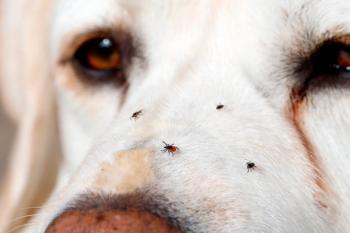
Why team building makes all the difference in your practice and how to do it right

How team building can improve morale and productivity
Content submitted by
Every day in a veterinary practice is an adventure. You really never know what you’re in for walking in the door, and this is even more true today than ever before. We’ve all had that day where we show up to work to find a receptionist out sick, the computer system has a glitch, a cat in exam room 1 that can’t breathe, and we just got 3 surgical drop-offs in the lobby.
Whether that day ends with the team throwing instruments and stomping out or high-fiving each other because they turned it around depends on teamwork, trust, and a shared mission.
More broadly, the last 2 years with COVID-19 have been a massive test of your practice’s culture, relationships, and ability to cope with change as a team. While every practice was affected by the pandemic, some rose to the occasion to become stronger, while others struggled, lost staff, and suffered from burnout and breakdowns. And with inflation and the possibility of a recession on the horizon, our teams seem to have no end to stressors.
Lack of teamwork affects every aspect of a hospital. It affects the client experience because clients can perceive the different agendas or lack of alignment around the service they’re receiving. It affects patient care because when people aren’t fully communicating, things get missed; when people don’t fully trust each other, they don’t coordinate well, make mistakes, and waste time. Weak team cohesion also affects the bottom line, primarily due to turnover. It’s estimated that it costs a business 6 to 9 months of a person’s salary to replace them if they quit.
With all the stress today in veterinary medicine, it’s never been more important to create a supportive environment for your team, where they feel safe and connected and fully trust each other.
Where to start? it’s all about the mission
For over 25 years, everything we do in my practice has been based on our mission statement. But it’s more than just having a mission statement, you need to have the whole team aligned behind that mission statement, meaning they all understand what we're trying to accomplish as a team. When you hire, fire, and train your team based on your mission, you create an aligned environment, and you develop a sense of shared purpose. There are just a few fundamental differences between a random group of people and a team, and most of them connect back to the mission:
- A team is united around a common purpose
- A team has different players with different specialties cooperating toward a goal
- Team members trust each other to competently do their specific part of the job so that all the different actions come together to win the game
What’s in the way?
The most significant barriers to success in team building are very simple:
- Not having clarity on the mission, leading to misalignment on the team
- Not knowing the steps to create and maintain that alignment
Very few veterinarians get any leadership training. We are notoriously introverted (myself included). When you’re living inside your own head too much, it’s easy to think that just because you have clarity on your practice’s mission, goals, and priorities, your team automatically knows those things, too. It’s important to recognize that you must communicate with clarity to all your employees, not just yourself or your leadership team.
Then once you’ve communicated your mission with clarity, you need to keep communicating it.
Sometimes, I’ve been guilty of telling the team something once or twice and assuming they “know” it. Unfortunately, with all of the action and challenges in today’s practice environment, it’s vital to constantly remind the team of the mission through words and actions.
There are also often changes that need to be made in a practice, such as switching to a new line of vaccines or starting a new surgical protocol. At these times, having a strong and aligned team helps you roll out these changes in an orderly fashion without internal conflict and confusion.
I think so often, veterinarians are just more comfortable with the chaos of exams and surgery than they are with planning and leadership, so they say they're too busy to do those things. I was in the same position that every veterinarian is in, being by myself for 5 years before I even hired my first associate. However, I consistently worked on my planning so that I was ready to grow. If you don’t plan it, it's not going to happen. Put in the time on your planning, and it will pay off for years to come. If you don’t put in the time, you risk constant turmoil and unrest.
Why are the mission and teamwork so important?
No one makes enough money in veterinary medicine to make it worth working in a crummy place. So, as a practice owner, it’s my duty to make my practice a great place to work for all my employees. The most significant difference between an energized, engaged workplace and a toxic, dysfunctional one is the quality of the teamwork. I think I have a great team, but I’m never done working on it. It’s something you create daily, from how you talk to your employees to how you greet clients, communicate a treatment plan to a client, and work together in the surgical suite and a thousand other daily interactions.
Signs you need help
The biggest signal that you have a team-building problem is turnover. If you have a high turnover of doctors or staff, that's a key indicator that your practice is not a great place to work. Beyond that, other major signs of a teamwork problem include confusion around processes and policies or multiple “sub-cultures,” such as “the back vs the front.” And if you feel exhausted, undermined, or victimized by your employees or clients, that’s another sign that you don’t have a strong team supporting you.
Steps you can take
If you’re worried that your team isn’t as strong as it could be, don’t despair. The great thing about being a leader in your practice is that you can change things for the better. It takes commitment and work, but you can make it happen.Here are a few steps you can take right away:
- Define your practice’s mission, values, and culture. Get clarity first on your personal purpose for the practice and what you stand for. Then work with your leadership team to communicate this throughout your organization.
- Model and reinforce the behavior you want to see. As a leader, you must recognize that your team will pay some attention to what you say, but they pay much more attention to what you do. Your team also notices what you acknowledge and what you correct on the team. It works both ways; it’s vital that you point out when someone has done something that’s not consistent with your practice’s values, but it’s even more important to recognize and celebrate team members doing it right. The biggest driver of retention isn’t pay or benefits, it’s the employee feeling they are a valued part of a team.
- Implement regular meetings. Regular staff meetings are vital to reinforcing your priorities and building your team. I suggest at least a 2-to-3-hour all-staff meeting once a month, plus a shorter weekly meeting to focus on tactical priorities for the week.
If you want to change your life (and the lives of your employees) by improving teamwork in your hospital, I have a few recommendations:
- Read the book Traction: Get a Grip on Your Business by Gino Wickman, and work on developing an Operating System for your own practice by following his guidelines.
- Read the book The Five Dysfunctions of a Team: A Leadership Fable by Patrick Lencioni and follow the steps he outlines to overcome team dysfunction and build unity.
- Watch my video,
Create a Stronger Team by Defining Your Practice Culture (Sponsored by Merck Animal Health) and follow the procedure it demonstrates. This short video walks you through the steps I use to define and strengthen our culture in my practice. I’ve used this process with other practices around the country, and many have applied it on their own with excellent results.
Newsletter
From exam room tips to practice management insights, get trusted veterinary news delivered straight to your inbox—subscribe to dvm360.






